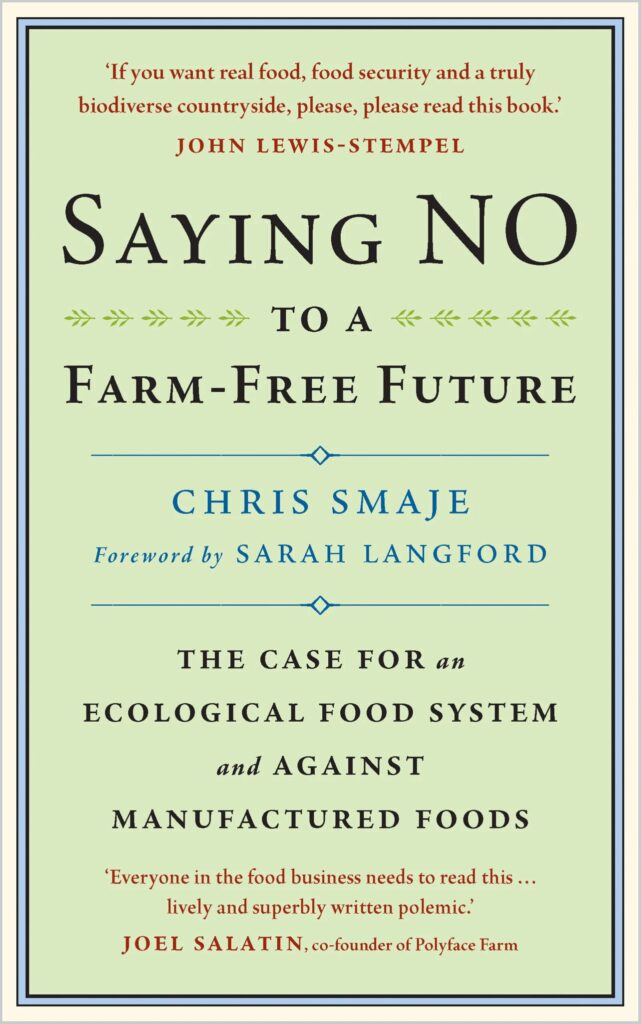
The Case For an Ecological Food System and Against Manufactured Foods”
By Chris Smaje
Chelsea Green Publishing, 2023
208 pages, paperback, $19.95
Like many in our MOFGA community, Chris Smaje is a small-scale farmer whose commitment to rural livelihood and traditions has strong intellectual underpinnings. He has written a brief but effective rebuttal to “ecomodernism,” an emerging argument that advocates for technological solutions to the climate change conundrum. If a return to nuclear power makes you uneasy; or if you have ever tried to justify your consumption of local grass-fed beef; or perhaps you would rather bicycle to work than own an electric car, then this book is for you. In “Saying NO to a Farm-Free Future,” Smaje takes on the ecomodernists, often on their own terms.
Understanding the overwhelming challenges of climate change makes many of us susceptible to the solutionism of science fiction. Dense housing and electric transport will fix sprawl and car culture. Indoor vertical farming will allow for the reforesting and rewilding of farmland. Carbon-sequestration technology and genetically improved plants will bring down greenhouse gas levels while renewable and nuclear power will allow us all to continue living our urban, automated, optimized lives. Smaje guides the reader through several of these fantasies, rooted as they are in tech-sector philanthropy and start-up culture where profits cloud and narrow the logic.
Smaje dwells on manufactured protein (aka lab-grown meat), which promises to solve the problems of industrial livestock farming and the need for protein in our diet. Feedlot beef certainly allows billions of consumers access to cheap hamburgers and Smaje condemns what he calls the “Global Standard Diet”: a high-energy, low-labor, low-nutrition menu available nearly everywhere. But pastoralism and other forms of disbursed livestock farming can be net positive to the environment. Cows (and other domesticated animals) have a role to play in our agrarian future where nutrient cycles are local, energy needs are low and more of us are farmers actively engaged in providing for the needs of our communities. All of this is opposite to the ecomodernist vision.
This book is most engaging in its insistence that ecomodernism is actually no different from the industrialism that drives our current crisis. We are less at a fork in the road than on a one-way highway leading to disaster. The off-ramp of “agrarian localism,” which Smaje urges us to take, is a shift in mindset that in fact does not have all the answers. Different landscapes and cultures will have different solutions but nowhere shall we sacrifice “congenial,” local livelihoods for an ethic of excess and exploitation. Interestingly, this route is marked by lessons of indigeneity and a reverence for our human diversity: context will be everything. Transition will be hardest for post-industrialized states and less so for the majority of the global population still connected to subsistence and small-scale market farming (up to 70% according to the United Nations). This is a challenging argument and it does call for quite a lot more than simply “saying no” to ecomodernism. Fortunately, for those of us already committed to localizing our livelihood, much of Smaje’s argument will ring true and give us courage to stick to our convictions that the future is agrarian.
John Bliss, Scarborough, Maine
